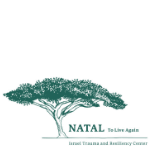17 April 2018
Iyar 2, 5778
Innovative study provides the first real-time profile of trauma symptoms during protracted warfare
An innovative study, conducted by the University of Haifa and NATAL – Israel Trauma and Resiliency Center, has provided the first real-time profile of trauma symptoms experienced by citizens on the front line during protracted warfare. The study, which was conducted during Israel’s Operation Protective Edge, found that people who reported having a startle response to everyday situations (such as loud or sudden noises) were at higher risk of experiencing post-traumatic symptoms, such as sleeping problems, a sense of disassociation, or difficulty concentrating, over the next 12 hours. “This is the first time that we have managed to monitor the process undergone by people in a trauma situation in real time and to identify one of the ‘engines’ that could ultimately drive whether someone develops PTSD or not,” says Dr. Talya Greene of the Department of Community Mental Health at the University of Haifa, one of the authors of the study.
Numerous studies have examined the impact of warfare situations on the development of PTSD. However, these studies have generally concentrated on the final outcome – whether or not people developed PTSD, without monitoring the process itself on a real-time basis. The present study is innovative in that it began on the eighth day of Operation Protective Edge and continued for 30 days as the operation itself continued. The participants were 96 people living in areas where residents had no more than 60 seconds to enter protected spaces following alerts. All the participants were healthy and without a prior diagnosis of PTSD. The participants completed questionnaires about their PTSD symptoms twice a day, thereby allowing the researchers to monitor traumatic symptoms, the connection between these symptoms, and the impact of war-related events, as the conflict persisted. The researchers who led the project, Dr. Greene (Department of Community Mental Health at the University of Haifa) and Prof. Marc Gelkopf (Head of the Department of Community Mental Health at the University of Haifa and Head of Research at NATAL), emphasized that during this study, they monitored the process undergone by people during a protracted traumatic event. The study was undertaken with the support of the Tauber Association, and in collaboration with researchers from the University of Amsterdam, Dr. Eiko Fried, and Dr. Sacha Epskamp.
It emerged that the strongest predictor for the development of other PTSD symptoms within 12 hours was “startle reactivity” Participants who reported on a real-time basis that they had startle reactions to loud noises, doors suddenly opening, and so forth at one time point, were at the highest risk of experiencing a series of symptoms, including hypervigilance, difficulties in concentration, a sense of detachment, negative emotions, and sleeping problems over the next 12 hours.
A further symptom that predicts a range of other symptoms over the next 12 hours was the reduced ability to feel emotions. Participants who reported blunted emotions were at higher risk for developing a sense of detachment, anger, sleeping problems, and so forth within the next 12 hours. Participants who reported strong negative emotions on a real-time basis were more likely to develop other symptoms over the next 12 hours, including sleeping problems or feelings of guilt.
The researchers explain that the findings provide information that could help mental health professions find ways to help citizens facing such negative phenomena during the event itself. These are different for different people, but spending time with close friends and family, and trying to relax and maintain routine can often help to calm people down and reduce stress reactions, which in turn may reduce the likelihood of further symptoms. “We identified some key symptoms which might be central in driving the development of posttraumatic stress disorder. It is still unclear how each such ‘engine’ works, but our unique study, and the large quantity of real-time data can help us develop a deeper understanding of the process itself. This may eventually help in the treatment of PTSD,” concluded Dr. Greene.
For further details, please contact:
Ilan Yavelberg – 052-8666404
Itai Shainer – 050-4242780
The full study can be found below:





